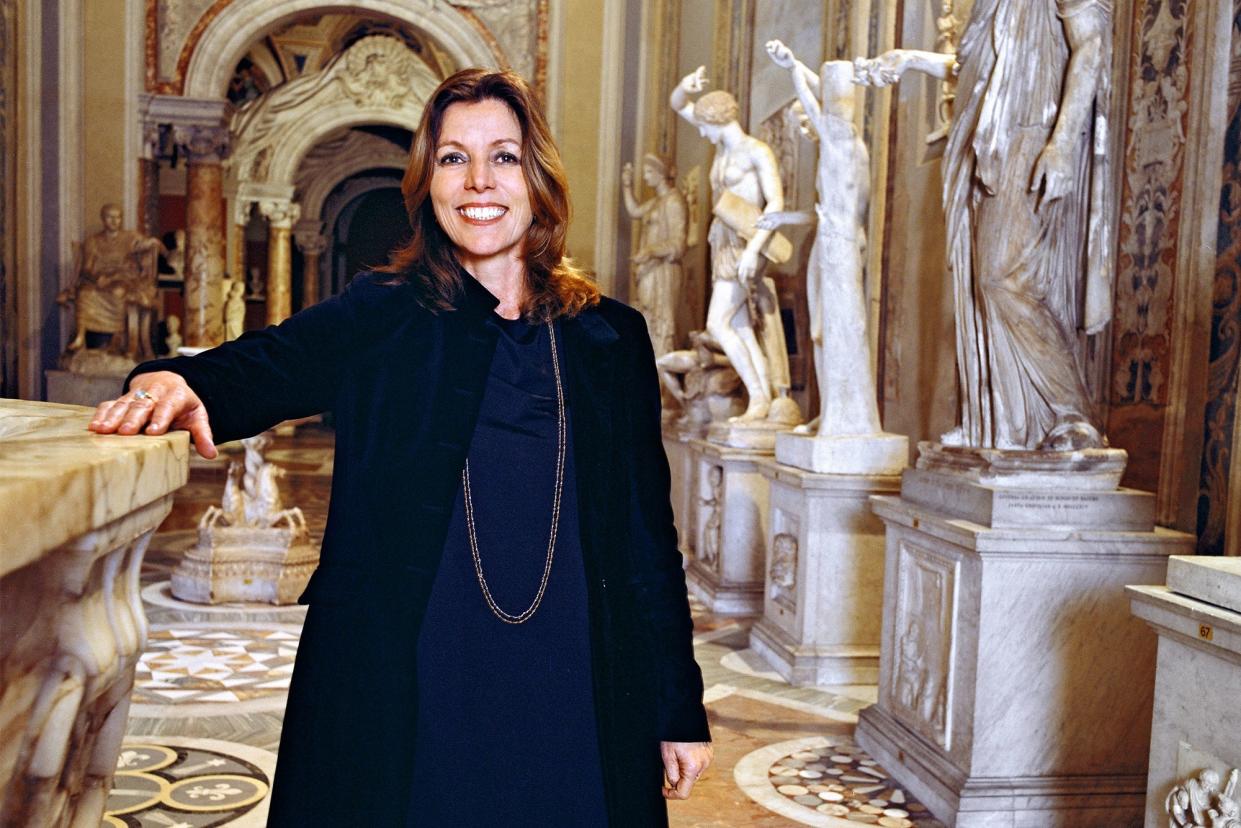Barbara Jatta, the First Woman to Head the Vatican Museums, Is Bringing Change to the Eternal City

The response was diplomatic, as you’d expect from someone long familiar with the Baroque folkways of the Holy See. No, said Barbara Jatta, the new director of the Vatican Museums, she did not really have a favorite object in the collection. But she did have a favorite place. And from her office she led the way down an interior staircase (with a Della Robbia on the wall); past the Egyptian Museum and the Etruscan Museum; and finally to a confessional-sized elevator that took us up to a columned rooftop terrace, designed by Bramante, high above the museum’s central courtyard. The open-air loggia overlooked the dome of St. Peter’s, illuminated against a twilight sky. Favorite place? No explanation needed. “I’m a Roman,” Jatta said, turning in a circle. “And from here you can take in the whole museum, the whole Vatican city-state, all of Rome . . . the whole Roman province from the mountains to the sea.”
The Vatican Museums are sprawling; the public corridors alone extend four-and-a-half miles. Jatta, who comes from a family of artists and conservators, had worked at the Vatican for two decades before succeeding Antonio Paolucci as director of the museums—and becoming the first woman ever to hold the position. Jatta faces some tough challenges. One is the number of visitors—6 million a year, and climbing. (A possible solution: creating a separate entrance for those interested in lesser-known parts of the museum—and happy to forego the forced march to the Sistine Chapel.) Meanwhile, the entire collection—hundreds of thousands of objects—needs to be digitized (as the Apostolic Library has been, to a high standard, partly with Jatta’s help). The Vatican collections are unrivaled in their variety—objects of stone, wood, clay, paint, cloth, plaster, paper, parchment, and metal, from the Stone Age through the Space Age—and preserving them demands ingenuity. Conservators can’t just be doctors; they’re more like veterinarians. And you never know what might turn up: two paintings by Raphael were recently revealed during conservation in one of the rooms in the apartments of Pope Julius II.
Descending from the loggia, we passed again through the central courtyard—the Cortile della Pigna. Restoration of the loggia and the facade beneath it is nearly complete, the crumbly ochre now renewed to a smooth, rich cream—almost literally; the Pope keeps cows at Castel Gandolfo, his country estate in the Alban Hills, and milk from the herd was mixed with natural pigments and lime tints to cleanse and treat the stone. So that’s the traditional side of things. But then there’s this month, the Vatican Museums are launching a new Web site with an interactive display created by Sting. “I’m not in a monastery,” Jatta said. “I’m a working woman of the third millennium.”

